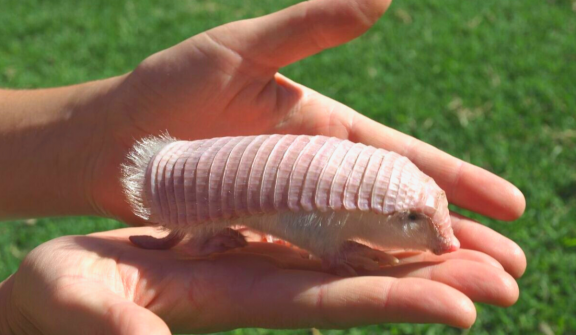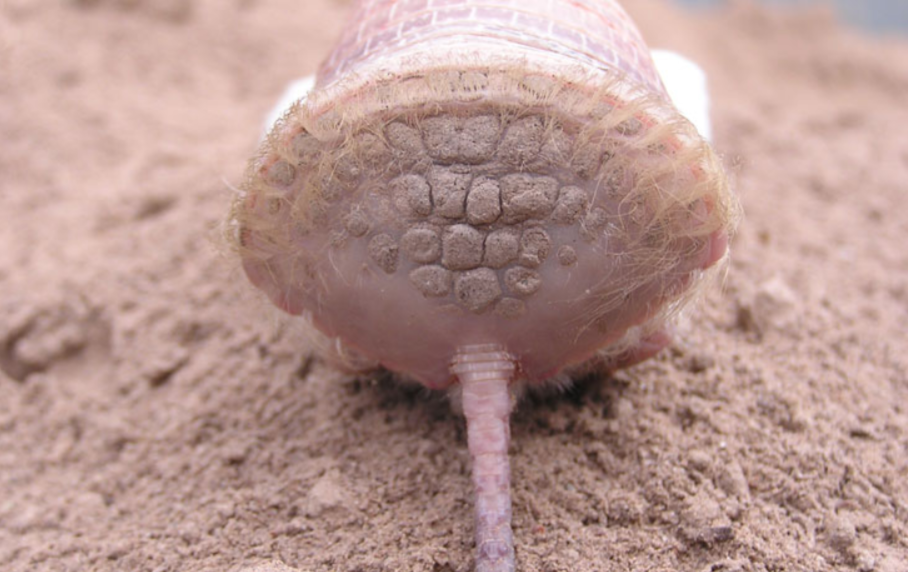
Nature presents us with extraordinary creatures, and among them is the delicate pink fairy armadillo. Join us on a journey as we uncover the secrets of this tiny armored marvel, delving into its underground lifestyle, conservation challenges, and the quest to protect it from looming threats
The pink fairy armadillo (Chlamyphorus truncatus), is the smallest armadillo species worldwide, weighing only around 100 grams and fitting comfortably in one's hand. Dr. Mariella Superina from Argentina's CONICET research center describes this unique creature as covered in "silky white hair," while its hard outer shell, rich in blood vessels, can blush into a beautiful pink hue.

This fascinating armadillo possesses a protective armor called a carapace along its spine, akin to the exoskeletons of turtles and crustaceans. The carapace serves as its primary defense against predators. When threatened, the pink fairy armadillo swiftly burrows underground, utilizing its armor plate to seal the entrance, ensuring additional security.
Despite its captivating features, much about the biology of the pink fairy armadillo remains shrouded in mystery. It exclusively inhabits a dry, sandy region in Argentina and predominantly resides underground, making it challenging to study and assess its conservation status.

Dr. Superina leads an international team of experts evaluating the extinction risk for all 21 known armadillo species, along with their close relatives, sloths, and anteaters.
After a decade of fieldwork, Dr. Superina has yet to encounter a pink fairy armadillo in its natural habitat. She has only stumbled upon tracks left by its digging claws, which abruptly end after several meters, indicating the armadillo's retreat underground.

On rare occasions, individuals have managed to capture these creatures, but their survival in captivity proves short-lived, typically lasting no more than eight days.
Dr. Superina faced challenges caring for one such captive armadillo that could not be released back into the wild. Despite its natural diet of ants, larvae, worms, snails, and insects, this particular armadillo refused to eat anything until a mixture of milk, cat food, and half a banana proved acceptable. However, each armadillo's dietary preferences differ, rendering them unsuitable as pets.
During the eight months, the tolerant armadillo resided in Dr. Superina's home terrarium, infrared cameras captured its movements beneath the sandy surface. This unprecedented observation dispelled the belief that the species "swam" through the sand; instead, it digs, backs up, and compacts the sand with its distinctive butt plate.

This behavior sheds light on ancient paleontological mysteries, as compacted earth discs resembling drooping slices of bread may have been the work of the flattened butt plates of fairy armadillos from the past.
In 2008, the International Union for the Conservation of Nature classified the pink fairy armadillo as "data deficient," and since then, sightings have become increasingly rare. While not sought after as a food source, the species faces threats from climate change, pesticide use, large-scale livestock farming, and the growing population of domestic cats and dogs that prey upon them.

The pink fairy armadillo continues to captivate researchers and wildlife enthusiasts, urging us to appreciate the marvels of nature and strive for the conservation of these enigmatic creatures that play vital roles within their ecosystems.
The pink fairy armadillo continues to fascinate scientists and conservationists with its intriguing characteristics and fragile existence. By raising awareness about the challenges faced by the pink fairy armadillo, addressing issues such as illegal pet trade and environmental threats, and promoting responsible conservation practices, we can contribute to safeguarding this extraordinary species for generations to come.
Read more: Kummakivi balancing rock: a testament to nature's astonishing feats




